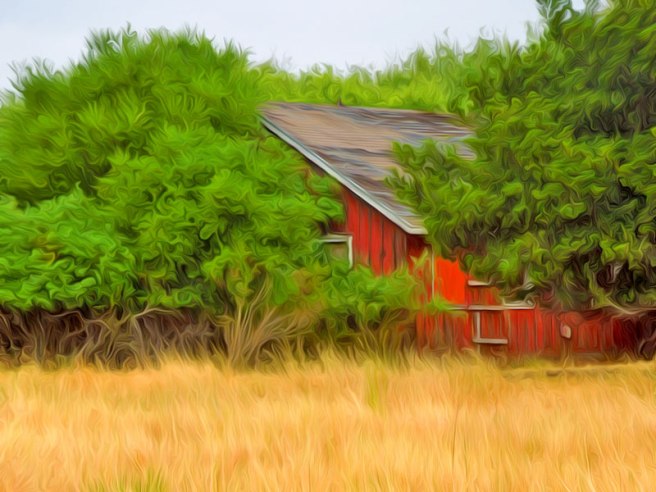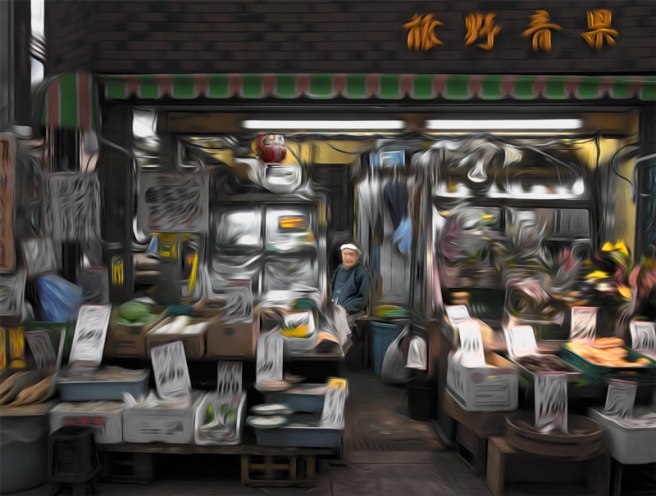The Heart Sutra by Janney

The Heart Sutra begins:
Avalokitesvara Bodhisattva
when practicing deeply the Prajna Paramita
perceives that all five skandhas are empty
and is saved from all suffering and distress.
I wonder what Janney felt as she wrote this sutra, Chinese characters are different than English phonetic alphabet and words, each character is a visual representation of a meaning while in English letters combine to make a sound which represents a meaning—contrast visual experience to a sound experience. Its a big artistic and design effort to think this whole project out, get everything designed right and then do all of those brush strokes so nicely. Maybe Chinese characters are more inclined to the experience of enlightenment.
The calligrapher may have
Early morning at Sensoji. Before 6 am people may gather to get in line to hear the chanting of The Heart Sutra.

Bodhisattva is a term referring to a person who is “one step” away from becoming a Buddha and chooses to delay “Buddhahood” to help others.
The priest may arrive a little early, stand at the door, talk, and at 6am open the big door and people can take a seat.

Avalokitesvara is a specific Bodhisattva who represents the Compassion of All Buddhas, the Mercy Goddess, and also you may know her as Guanyin, Kannon, or Kuan Yin.
I wonder are not all Buddhas the same compassion? or maybe no compassion and no noncompassion.

Kannon is the Goddess of Sensoji.
The Prajna Paramita, the Perfection of Wisdom, may refer to a state of being and/or the sacred literature.
People may wear kimono, even come in the rain . . . there are stores near-by which rent kimono by the hour . . .

And then you could just say that people come there, everyone with their own personal, perhaps unique reason.

People enjoy being there, you do not see this kind of happiness, the happiness of just being people, at western churches.
In western churches “happy gatherings” are people celebrating things they share that differentiate them from others, not things everyone shares as human beings.

The five skandhas are your five senses—our empirical senses, see, hear, touch, smell and taste, the common tools for human learning—NOTE: having a dream, God talking-to you or knowing your gut are not included.
These terms are much more complex than I have defined them but my simplification enables you to get a feel for their relationships in the passage.
Walking at Coyote Hills . . .

“Arriving in Kan-tung early in 1948 after three thousand miles of travel, the Master went to Nan-hua Monastery and bowed before the Venerable Master Hsu-yun, the 44th Patriarch from Sakyumuni Buddha At that first meeting the Venerable Master Yun, who was then 109 yeas, recognized the Master to be a vessel worthy of the Dharma and capable of its propagation. He sealed and certified the Mater’s spiritual skill and transmitted to him the wonderful mind-to-mind seal of all Buddhas. . . .

. . . Thus the Master because the 45th generation in a line descending from Sakyamuni Buddha, the nineteenth generation in China from Bodhidharma, and the ninth generation of the Wei-yang lineage.”
Records of the Life of Ch’an Master Hsuan Hua Part II

“The Heart Sutra is a summation, not an introduction . . . it is nothing less than a summation of the wisdom of the Buddha . . . It is the heart in the heart within the heart.”
The Heart Sutra and Commentary by Master Hua

If The Heart Sutra is a summation, than why need any of this other Buddha stuff,—temples, bels, books, chanting, drums, enlightenment, masters, meditating, scrolls, statues, sutras—all free from God—that’s why I watch TV, just to get away from it all.
Tofu with bits of anchovies and seaweed, carrots and beans for lunch.

On leaving we saw “. . . In green area there’s a red dot. . . ”

“Don’t use a Buddha to worship a Buddha.”
“To find a Buddha all you have to do is to see your own nature.”
attributed to Daruma
I guess it means do not let your own nature worship a Buddha or maybe do not let a buddha worship your own nature,
Painting by Janney

Here we are in this constantly increasing evolution of the division of labor as we produce new things requiring new education, new skills, new tools, new businesses, new jobs, and the old ones fall by the way side or just slowly fade away . . .
How to care for those whose job fades away before they can retire And, How to educate those for the new jobs that emerge before we even know what they will be until after they are needed.
its like making a painting, and its like Durkeim‘s anomie.
“ I remember my father went to town, real early in the morning, and got the mea for dinner, ’cause we didn’t have any way of keeping it. We didn’t have ice or refrigeration to keep the meet, so he’d go to town and get the groceries and what we needed real early in the morning,”
Sadie Davis, 79, Decatur County, from Feeding Our Families, Memories of Hoosier Homemakers 1983

One thing I noticed in my life, when I am with people I like to engage them in conversations about things they have done in the past, their opinions, Who is this person? How do they describe themselves, are their words different than how they act,

Brett Ponsett (“The Six Gun”) said. “There is often a difference ’tween the doin’ an’ the tellin’,” and I wonder if, or when, or why, I’m doin’ or I’m tellin’.

